Hyundai i10 vs Kia Sorento – Differences & prices compared
Compare performance, boot space, consumption and price in one view.
Find out now: which car is the better choice for you – Hyundai i10 or Kia Sorento?
The Hyundai i10 (Hatchback) comes with a Petrol engine and Manuel or Automatic transmission. In comparison, the Kia Sorento (SUV) features a Plugin Hybrid, Full Hybrid or Diesel engine with Automatic transmission.
When it comes to boot capacity, the Hyundai i10 offers 252 L, while the Kia Sorento provides 705 L – depending on how much space you need. If you’re looking for more power, decide whether the 90 HP of the Hyundai i10 or the 252 HP of the Kia Sorento suits your needs better.
In terms of consumption, the values are 4.90 L per 100 km for the Hyundai i10, and 1.60 L for the Kia Sorento.
Price-wise, the Hyundai i10 starts at 14600 £, while the Kia Sorento is available from 46000 £. Compare all the details and find out which model fits your lifestyle best!
Hyundai i10
The Hyundai i10 impresses with its compact design, making it an ideal choice for navigating through busy urban environments. Its interior is surprisingly spacious, offering drivers and passengers comfort beyond what one might expect from a city car. The model combines efficiency and practicality, making it an attractive option for those seeking both economy and functionality in their daily commute.
details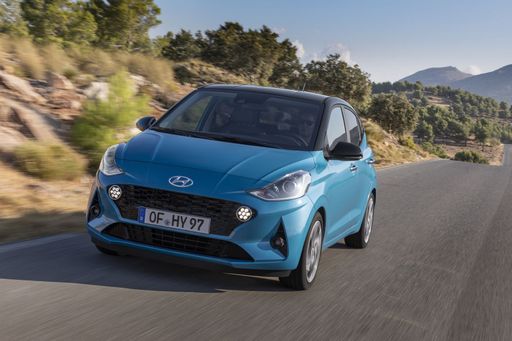 @ hyundai.news
@ hyundai.news
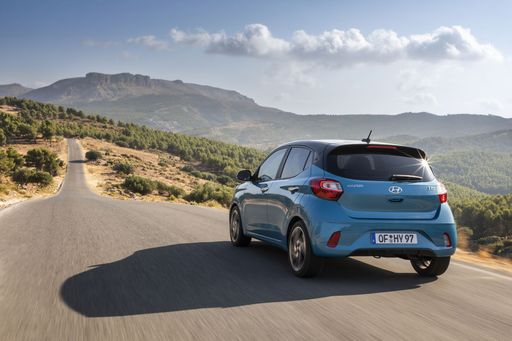 @ hyundai.news
@ hyundai.news
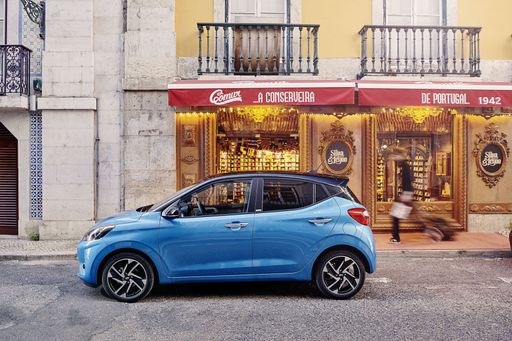 @ hyundai.news
@ hyundai.news
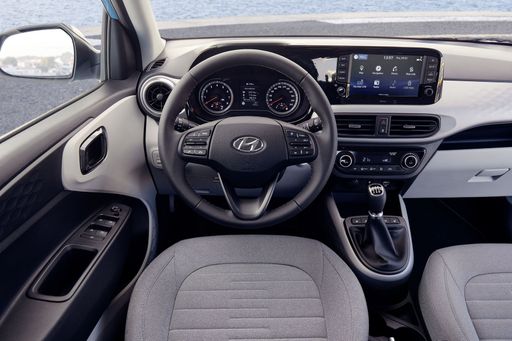 @ hyundai.news
@ hyundai.news
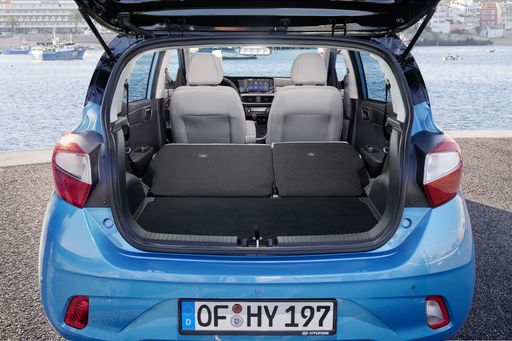 @ hyundai.news
@ hyundai.news
Kia Sorento
The Kia Sorento is a versatile SUV that seamlessly blends style and practicality, making it an appealing choice for families and adventurers alike. With its spacious interior and thoughtful design features, it ensures a comfortable driving experience on both urban roads and country excursions. Additionally, the Sorento offers a suite of advanced safety technologies, enhancing peace of mind for its passengers.
details @ press.kia.com
@ press.kia.com
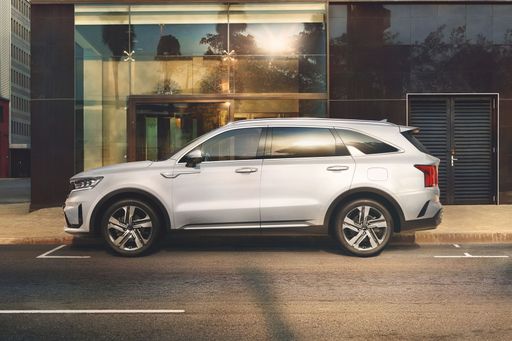 @ press.kia.com
@ press.kia.com
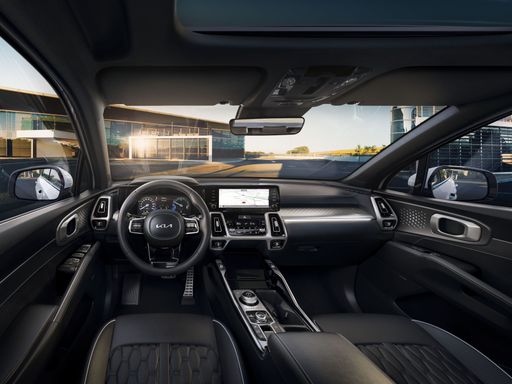 @ press.kia.com
@ press.kia.com

|

|
|
|
|
Costs and Consumption |
|
|---|---|
|
Price
14600 - 19000 £
|
Price
46000 - 59300 £
|
|
Consumption L/100km
4.9 - 5.5 L
|
Consumption L/100km
1.6 - 7.2 L
|
|
Consumption kWh/100km
-
|
Consumption kWh/100km
-
|
|
Electric Range
-
|
Electric Range
55 km
|
|
Battery Capacity
-
|
Battery Capacity
-
|
|
co2
110 - 124 g/km
|
co2
37 - 174 g/km
|
|
Fuel tank capacity
36 L
|
Fuel tank capacity
47 - 67 L
|
Dimensions and Body |
|
|---|---|
|
Body Type
Hatchback
|
Body Type
SUV
|
|
Seats
4 - 5
|
Seats
5 - 7
|
|
Doors
5
|
Doors
5
|
|
Curb weight
996 - 1099 kg
|
Curb weight
1854 - 2105 kg
|
|
Trunk capacity
252 L
|
Trunk capacity
175 - 705 L
|
|
Length
3670 - 3675 mm
|
Length
4810 - 4815 mm
|
|
Width
1680 mm
|
Width
1900 mm
|
|
Height
1480 - 1483 mm
|
Height
1695 mm
|
|
Payload
344 - 423 kg
|
Payload
455 - 684 kg
|
Engine and Performance |
|
|---|---|
|
Engine Type
Petrol
|
Engine Type
Plugin Hybrid, Full Hybrid, Diesel
|
|
Transmission
Manuel, Automatic
|
Transmission
Automatic
|
|
Transmission Detail
Manual Gearbox, Automated Manual
|
Transmission Detail
Automatic Gearbox, Dual-Clutch Automatic
|
|
Drive Type
Front-Wheel Drive
|
Drive Type
All-Wheel Drive, Front-Wheel Drive
|
|
Power HP
63 - 90 HP
|
Power HP
194 - 252 HP
|
|
Acceleration 0-100km/h
11.4 - 18.4 s
|
Acceleration 0-100km/h
8.8 - 9.7 s
|
|
Max Speed
143 - 175 km/h
|
Max Speed
183 - 201 km/h
|
|
Torque
93 - 172 Nm
|
Torque
367 - 440 Nm
|
|
Number of Cylinders
3 - 4
|
Number of Cylinders
4
|
|
Power kW
46 - 66 kW
|
Power kW
142 - 185 kW
|
|
Engine capacity
998 - 1197 cm3
|
Engine capacity
1598 - 2151 cm3
|
General |
|
|---|---|
|
Model Year
2024
|
Model Year
2024
|
|
CO2 Efficiency Class
C, D
|
CO2 Efficiency Class
B, E, F
|
|
Brand
Hyundai
|
Brand
Kia
|
Hyundai i10
Introduction to the Hyundai i10
The Hyundai i10 has consistently proven to be a dependable and stylish companion for urban driving. Known for its compact design and efficiency, this hatchback offers a perfect blend of modern aesthetics and practicality, making it a popular choice for city dwellers and small families alike.
Performance and Efficiency
The Hyundai i10 is available with both manual and automatic transmissions, catering to various driving preferences. Engine power ranges from 63 to 90 PS, providing a versatile driving experience for both novice and seasoned drivers. The fuel consumption varies between an impressive 4.9 to 5.4 litres per 100 kilometres, fitting for those looking to minimise fuel costs while also reducing their carbon footprint.
Engine and Transmission
Equipped with a choice of 1.0-litre or 1.2-litre engines, the i10 offers up to 172 Nm of torque, ensuring lively performance. The models feature front-wheel-drive configurations, allowing for smooth handling and reliable road performance. The car excels in city driving but is equally capable on longer journeys.
Interior and Comfort
Despite its compact size, the Hyundai i10 does not compromise on interior space and comfort. It accommodates four to five occupants comfortably, offering sufficient legroom and headroom. Its flexible seating arrangement and a 252-litre boot make it ideal for both quick trips and weekend getaways.
Safety and Technology
Safety remains a priority with Hyundai, and the i10 is no exception. It comes equipped with multiple airbags, stability control, and advanced braking systems. Technology-wise, the i10 features a user-friendly infotainment system with smartphone connectivity, ensuring a pleasant and connected drive.
Design and Style
The Hyundai i10’s design is both modern and sleek, making it stand out in the compact hatchback segment. With a length ranging from 3670 to 3675 mm, a width of 1680 mm, and a height of 1480 to 1483 mm, the i10 strikes a perfect balance between style and functionality.
Affordable Pricing and Value
The i10 is available in several trims including the Select, N Line, and Prime, among others, with prices ranging from €16,990 to €22,190. Considering its features and low running costs — with monthly expenses estimated between €694 to €793 — the Hyundai i10 offers substantial value for those seeking an economical yet stylish hatchback.
Conclusion
The Hyundai i10 combines efficiency, modern design, and practicality in a compact package. Whether you are seeking a reliable city car or an economical daily driver, the Hyundai i10 is a strong contender worth considering in the compact car market of 2024.
Kia Sorento
Unveiling the Kia Sorento: A Blend of Power and Efficiency
The Kia Sorento has firmly established itself as a reliable choice in the ever-competitive SUV market. In the 2024 model year, it continues to impress with a harmonious blend of power, efficiency, and cutting-edge technology. Excelling in versatility and innovation, the Sorento sets a high bar for its competitors.
Powertrain Options: A Drive for Every Preference
The Kia Sorento is designed to cater to diverse driving preferences with its extensive range of powertrain options. Whether you're inclined toward eco-friendly driving or dynamic performance, the Sorento offers a compelling choice. The plug-in hybrid models boast a combined power of up to 252 PS while maintaining impressive efficiency with a consumption rate as low as 1.6 L/100km. For those preferring a more traditional approach, the diesel variants provide robust performance with 194 PS, while hybrid options offer a balanced solution with a full-hybrid capacity.
Innovative Technologies for a Seamless Experience
At the heart of the Kia Sorento's appeal is its suite of innovative technologies, designed to enhance the driving experience. The automatic transmission, available across all variations, ensures a smooth and responsive drive. With both all-wheel and front-wheel drive options, it meets the demands of different terrains and driving conditions. Furthermore, the Sorento offers an electric range of up to 55 km, making it a strategic choice for urban commutes.
Performance and Efficiency: A Delicate Balance
Balancing performance and efficiency, the Sorento showcases Kia's commitment to sustainable mobility without compromising driving pleasure. Accelerating from 0-100 km/h in just 8.8 to 9.7 seconds, this SUV offers agility and responsiveness. Maximum speed ranges from 183 to 201 km/h, delivering performance that rivals sporty counterparts. Meanwhile, CO2 emissions are kept smartly in check with ratings from 37 to 174 g/km, underscoring its eco-conscious design.
Spacious and Versatile Interior Design
Inside the Kia Sorento, comfort meets practicality with seating arrangements ranging from 5 to 7 seats. It caters to families and adventurers alike, offering a generous boot space of up to 705 litres when configured for maximum cargo capacity. Thoughtful details enhance the driving experience, including a well-designed dashboard, intuitive infotainment systems, and premium materials across various trim levels such as Vision and Platinum.
Safety and Technological Features
Safety is paramount in the Kia Sorento, with advanced driver-assistance systems providing peace of mind on the road. From adaptive cruise control to lane-keeping assist, the Sorento is packed with features ensuring driver and passenger safety. Additionally, the infotainment system supports seamless connectivity options, such as smartphone integration, keeping occupants entertained and informed throughout their journey.
Conclusion: Shaping the Future of SUVs
The Kia Sorento continues to redefine expectations in the SUV segment, thanks to its blend of sophistication, performance, and technological prowess. With its environmentally conscious powertrains and advanced features, the Sorento is not just a vehicle; it's a forward-thinking mobility solution that aligns with contemporary lifestyles, making it an ideal choice for drivers with varying needs and aspirations.
What drivetrain options does the Hyundai i10 have?
The Hyundai i10 is available as Front-Wheel Drive.
The prices and data displayed are estimates based on German list prices and may vary by country. This information is not legally binding.
